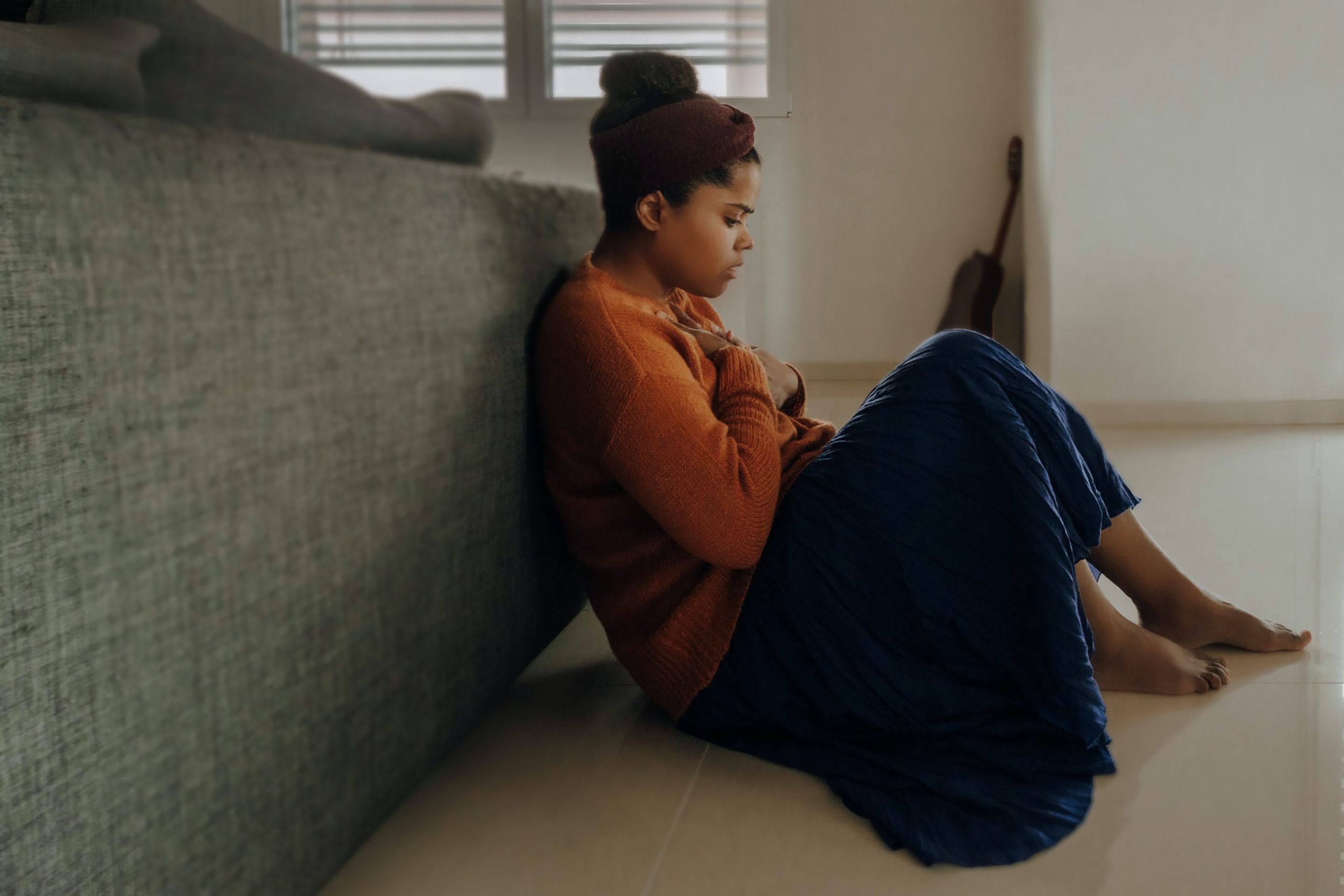Have you ever found yourself in a vicious cycle, worrying at length about a potential negative event? Your brain becomes filled with spiraling thoughts about the what-ifs, and you’re unable to focus. These feelings are uncomfortable to say the least. You fear how things could go wrong, so you do your best to avoid the negative event that you’ve conjured up. You find some way to distract yourself or to escape. Then, your symptoms go away and you feel a deep sigh of relief – you feel better! However, soon something else comes along to worry about, and you feel even less sure of your ability to cope. This is called the anxiety cycle, and it’s a very common reason people seek therapy.
Not only does anxiety appear in your head, but it also manifests in the body. Some of these physical symptoms can include headaches, fatigue, a fast heartbeat, shaking, shortness of breath, tension in your body (shoulders, clenched fists), or nausea/a pit in your stomach. You may also experience trouble sleeping. It’s important to pay attention to any of these physical symptoms, as they could be signs of anxiety. However, fortunately there are coping strategies that can help decrease these symptoms.
Matching coping strategies to your anxiety symptoms
You may find yourself wondering what the solution is to improve your anxiety. Often, anxiety can be treated through therapy, medication like Lexapro, Zoloft, Xanax, or Valium, or a combination of therapy and medication. For those with anxiety, a great first step is seeking out a therapist who specializes in treating anxiety disorders. During therapy, you can learn new coping skills that will help manage some of your anxiety symptoms.
Here are 4 of the most common anxiety-related symptoms and a coping skill for each of them. While these are helpful ways to manage symptoms of anxiety, it’s best to pair them with your therapy for the most well-rounded results. In therapy, you can also dive deeper than treating the symptoms, and get to the root of what may be underneath the anxiety.
Panic, fear, or uneasiness
This can show up in the form of a panic attack, or it can simply be a pit in your stomach and fearful thoughts racing through your head. Often, when we feel panic or fear, our fight-or-flight system kicks in to try to protect us from potential danger. It’s easy to get in your head and out of your present experience.
Try 54321. The 54321 exercise is a simple way to ground yourself in the here-and-now when you are in your head and feeling anxious. Start by looking around your surroundings and noting five things that you can see, four things you can touch, three things you can hear, two things you can smell, and one thing you can taste. As you pay attention to your surroundings and notice what’s around you, it will help you realize you are safe and not in danger.
Shortness of breath
Shortness of breath can feel scary, but with a little intentional focus, it’s easy to decrease this symptom. When you feel anxious or have shortness of breath, your fight-or-flight response kicks in and without realizing it, you are taking shallow breaths and your heart rate may increase. It’s your nervous system’s way of keeping you safe.
Try Deep Breathing. Although it sounds simple, deep breathing actually works! Taking deep belly breaths helps to slow down your sympathetic nervous system, and lets your parasympathetic nervous system have a rest-and-relax response instead. It takes practice, but the more you try taking deep breathing, the easier it will be to use it in stressful situations.
Feeling nervous, restless or tense
It can feel exhausting to have nervousness or tension, especially when it’s just enough to make you feel on edge, but not enough to be a full-blown panic attack. Perhaps some of your muscles are clenched, as if your body is bracing for attack.
Try Journaling and/or Moving Your Body. Depending on what’s causing you to feel restless and nervous, journaling or moving your body can help. Journaling helps to get thoughts out of your head and down on paper, clearing your mind to not feel as nervous. Similarly, moving your body, even just going for a short walk, helps to release any nervous energy and decrease muscle tension.
Sleep problems
Often, racing thoughts can make it difficult for your mind and body to relax and fall asleep at night. These anxious thoughts can take over your mind easily because there is nothing to distract you at night, so it can be difficult to stop your brain and body from being flooded by worries.
Try Progressive Muscle Relaxation. This is a relaxation technique that works by laying down on your back, and slowly tensing and then relaxing your muscles, starting from the top of your body and working your way down. It can help release tension in your muscles and signal to your body that you are relaxed and ready to rest.
Ready to hone your anxiety coping skills with therapy?
These are just a few examples of ways to manage your anxiety and learn how to self-soothe. However, there are specific treatments that can effectively treat anxiety, such as cognitive behavioral therapy. Also, therapy will help you to explore the root of your problems and gain deeper self-awareness. Contact us to get started.

